The products featured in this post were given to me by Aurifil, OLFA, and Michael Miller.
I'm excited to share that I'm today's stop for the final 2020 installment of the Aurifil Slice and Stitch Challenge. Way back in November of 2019 I signed up as one of the Aurifil Artisans to participate. I was very excited about the Color Builder thread boxes that Aurifil had recently released. (They are such a feast of color!)
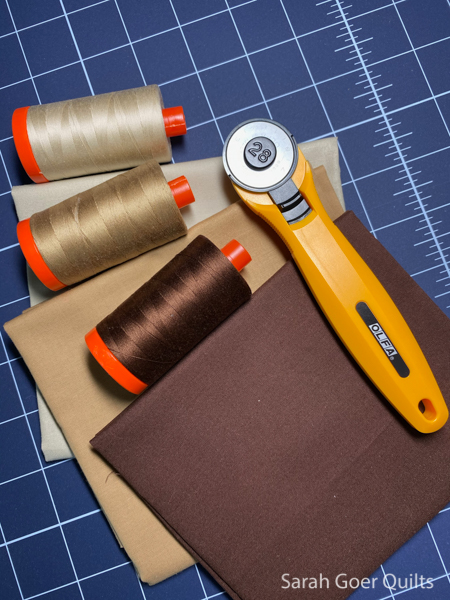
For the challenge I received the Florence Brown Aurifil Color Builder with three large spools of 50wt in Ermine (#2312), Toast (#6010), and Chocolate (#2360), a trio of Michael Miller Cotton Couture fat quarters in Khaki, Ginger, and Brown, an OLFA 28mm rotary blade (with refills), and a 24” x 36” OLFA cutting mat in Navy.

I enjoy planned improv piecing. I start with a set of rules or guidelines. This might be a color palette, a tool, a technique, or something else. My color palette and tools were provided for me. I knew I wanted to add a little bit of another color. Eventually, I landed on improv curves as my plan. (Scroll down for a mini tutorial on how I cut and sew improv curves.)
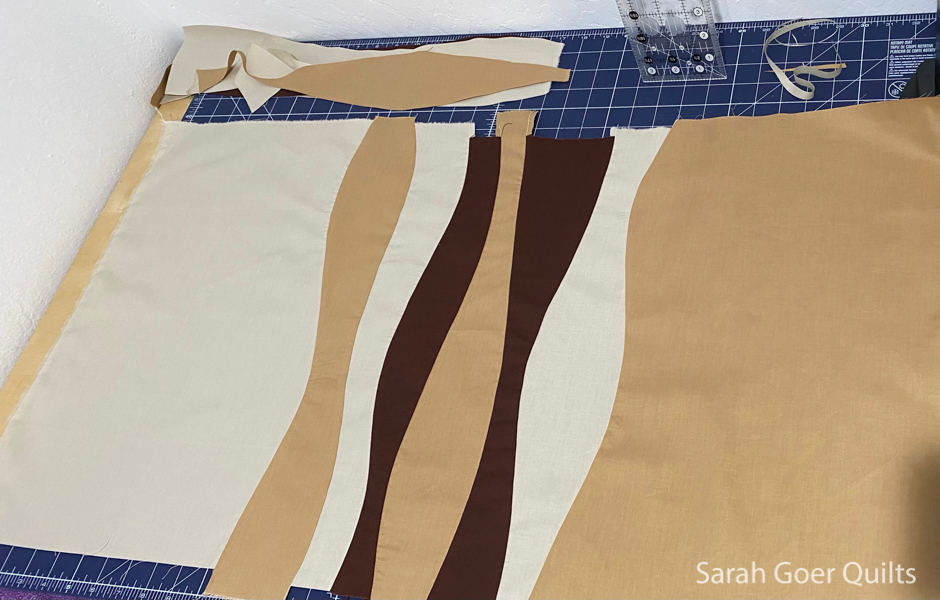
Initially I was considering a table runner with improv curves in khaki, ginger, and brown and thought I'd appliqué on some leaves in fall colors. I'm not terribly fond of the process of appliqué, so I pivoted to just improv curves. I eventually settled on a two-sided square table topper, because I had just enough fabric to make it entirely from my three fat quarters.
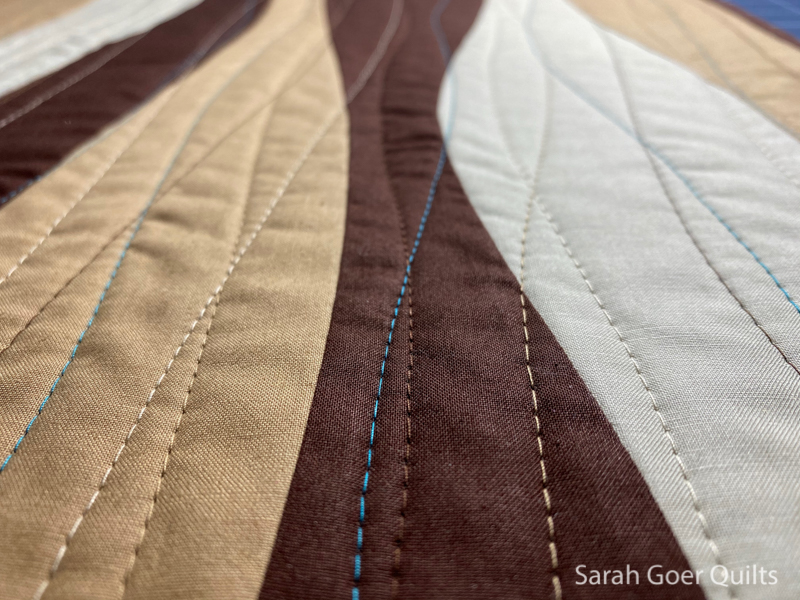
To complement the curved piecing, I opted for organic, curved walking foot quilting in four colors, adding a tiny splash of color with Aurifil 50wt Dark Turquoise (#4182).
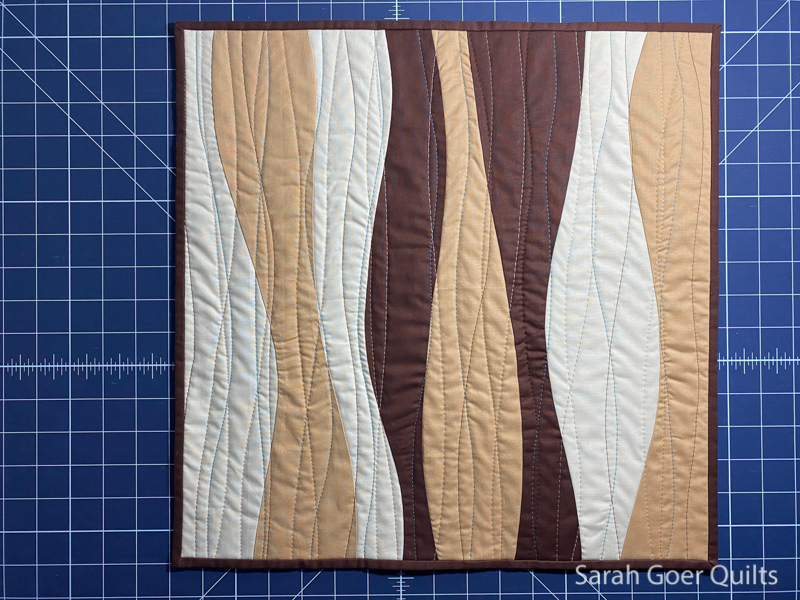

My finished quilt is 16 1/2" x 16 1/2".
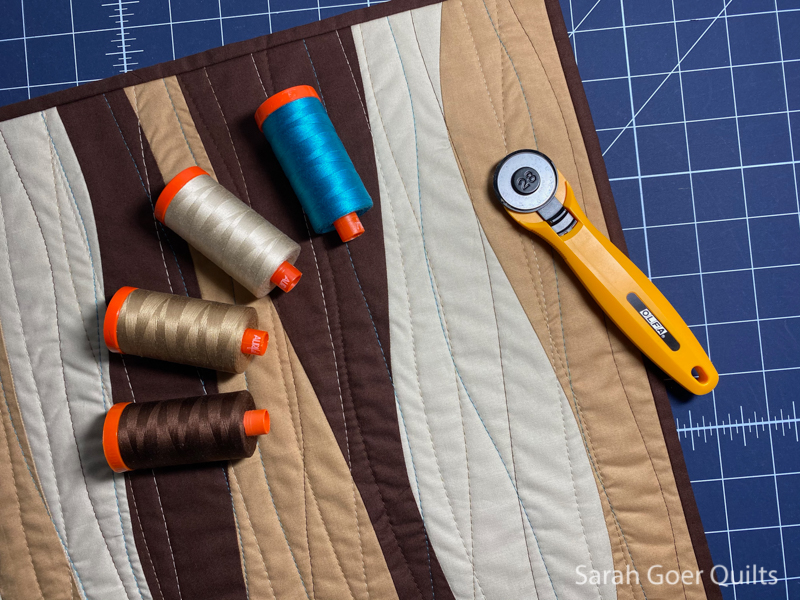
Thank you to Aurifil, OLFA, and Michael Miller for supplying me with everything featured in this quilt.

Improv Curve Tutorial
In general when I create improv curve piecing I make units that are oversized and trim them down after piecing. In the third photo from the top of this post above you can see my in progress work on my cutting table. The top and bottom edges are not aligned at all. If I wanted to create an 8" block I would probably start with pieces of fabric that were 10" wide.
Step 1: Lay two fabrics right side up, overlapping by a couple inches. (Not shown.) Slowly and carefully (keep those fingers out of the way!) cut through both layers with your rotary cutter (but no ruler or template), making a smooth improv curve. Always cut away from you. Remove the edges you've cut off of both fabrics so you have two pieces that fit together like a puzzle with the same curve cut. (This is more easily seen in the step 2 bottom photo below.) Here I have removed a little of the khaki fabric to the right of the cut and the edge of the brown fabric to the left of the cut:
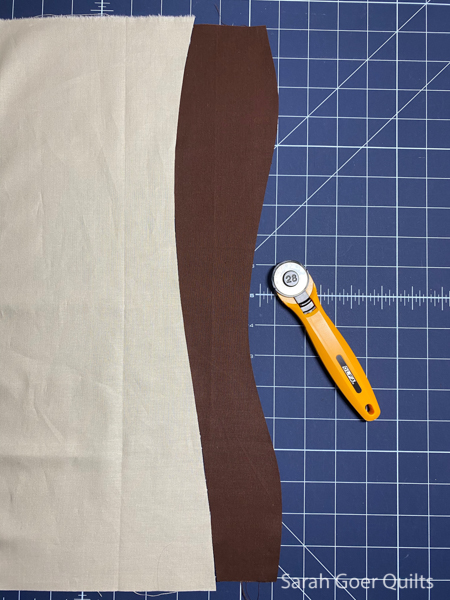
Step 2: Using your marking method of choice, mark points that align on the two fabrics. Here I have chosen to use two straight pins, one in the khaki and one in the brown. These points should line up when piecing the fabrics together. If the fabrics are difference lengths, also mark where the edge of one fabric hits the other. I have not pinned the fabrics together at this point, as you can see in the second photo below.
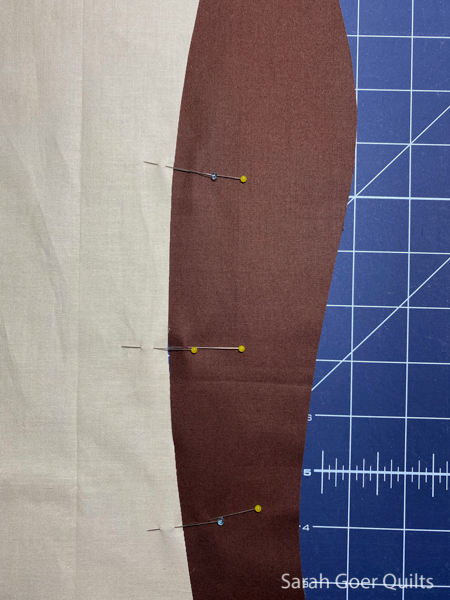
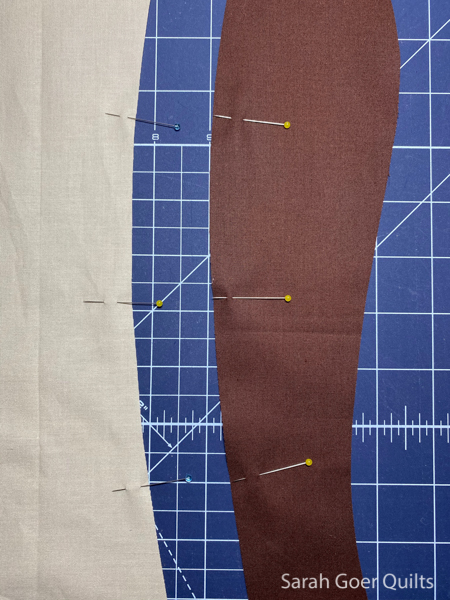
Step 3: Flip the right piece of fabric over and place onto the left piece, right sides together. Use your marks as a guide for pinning the two pieces at those points only. Since I had two pins that were used for marking I have pinned twice at each point. A single pin should work fine as well.
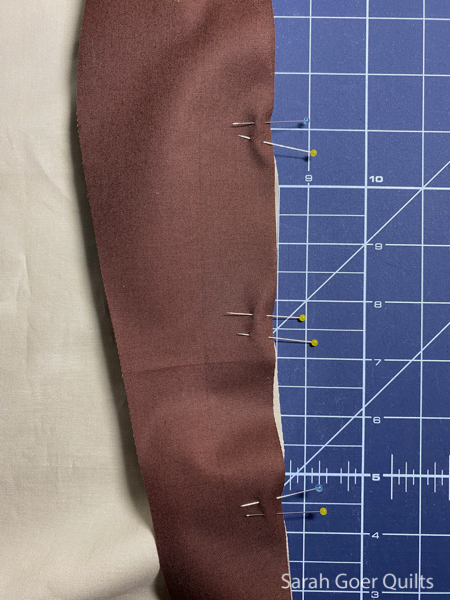
Step 4: Sew with a quarter inch seam allowance. The curved cut gives you a bit of stretch along the edge of your fabric. As you sew, gently stretch the (only the) longer fabric between each pair of pins. This will change depending on which part of the curve you are on. In general, you'll be gently stretching the fabric that has a concave curve in that section. Do not remove pins until you get close to them. Take care to make sure that your bottom fabric is laying flat to avoid puckers. If you are ending up with too much of one fabric when you get close to the pin try stretching the longer fabric a bit more when you sew that section. This part take a little finesse, so practice until you like your results. Smoother, flatter curves will be easier to sew. This technique is not recommended for a drunkard's path 1/4 circle where the two pieces really need to be cut from different templates.
I generally prefer to press my seams open, but improv curves are a time when I press the way the fabric wants to go. If you are using high contrast fabrics you should be able to press to the dark side. And if you want to try it, pressing open can work as well. The seam shown above is the left seam below on the finished back of the quilt.

Sarah is a quilt artist, pattern designer, teacher, and lecturer who is passionate about using bold color and geometric design in both traditional and improv quilts. She enjoys inspiring others in their creativity. As a former math teacher Sarah loves the geometry and math of quilting. She is currently visiting guilds virtually to present lectures and workshops on Zoom. Sarah lives in San Jose, California with her husband and two quilters kids.
Keep up with Sarah by signing up for the Sarah Goer Quilts Newsletter.

